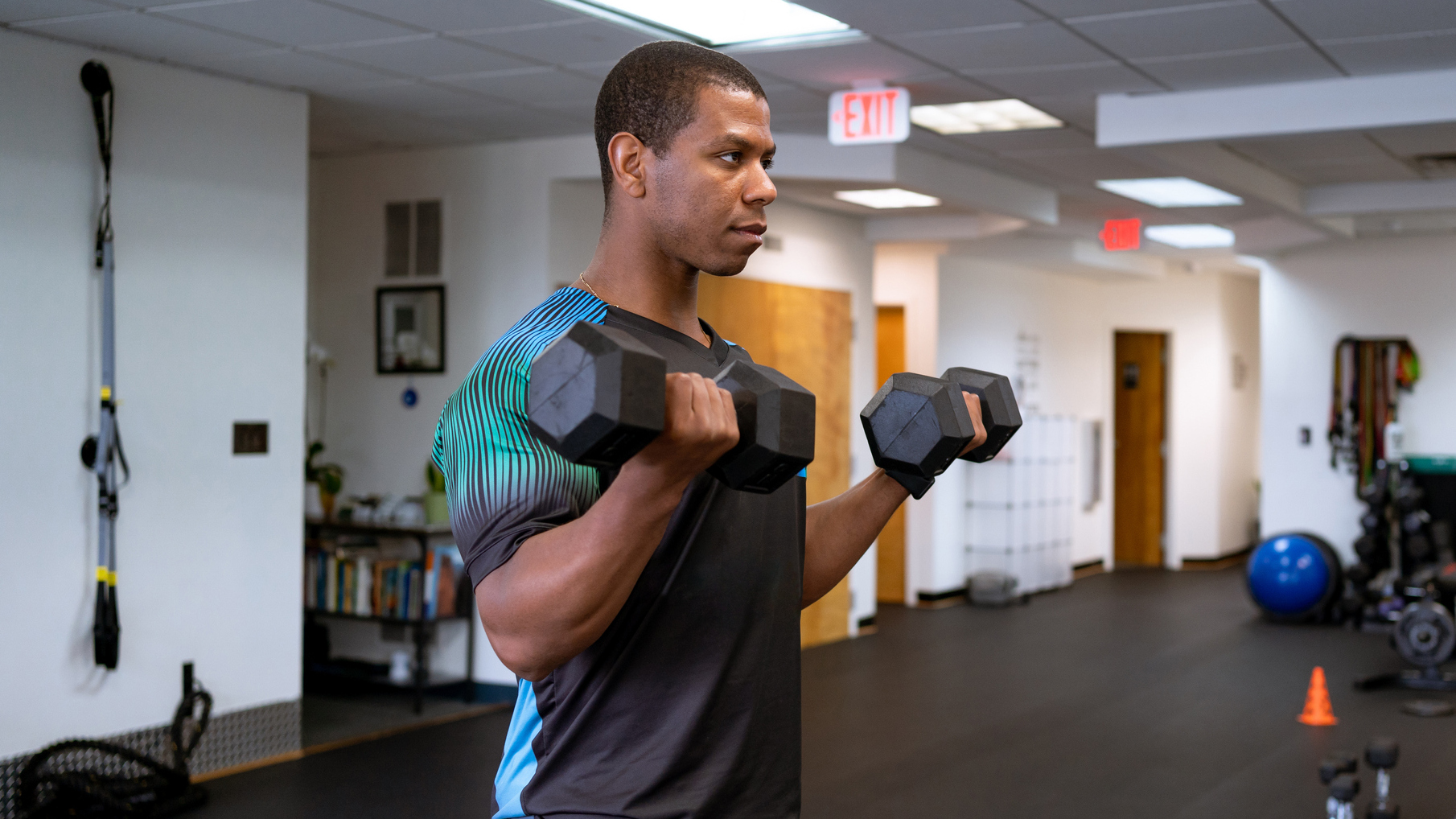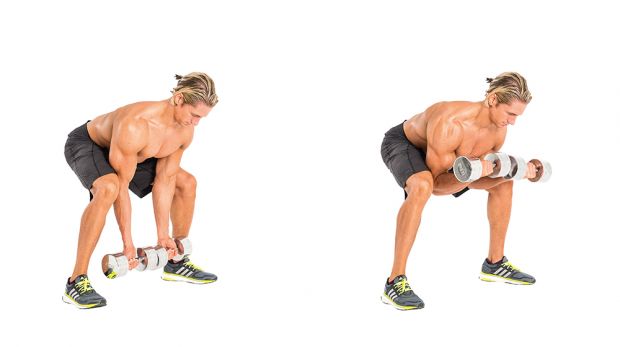Use These Six Types Of Dumbbell Curls To Bulk Up Your Biceps
Our guide to all the types of dumbbell curls you can do will help you build bigger arms in no time

If you own a set of dumbbells or are a member of any gym then you’re probably already doing some kind of dumbbell curls. We’d wager you’re doing the traditional biceps curl, standing with your palms facing forward at the start, and that’s a good thing—they’re among the best biceps exercises, after all. But there are more great dumbbell exercises that focus purely on that muscle group to help you build bigger upper arms.
The world of curls is wide and varied, and while all will work wonders in bulking up your biceps, the different angles used build more rounded, stronger arms than simply doing the classic curl alone would.
Below you’ll find guides to six dumbbell curls you can use during arm workouts, starting with the classic dumbbell biceps curl. But first, answers to some essential questions.
What is a good weight to curl?
Don’t opt for weights you can barely lift. You should be looking to complete whatever set and rep range your training demands with the final few reps providing a challenge to complete with good form.
How many curls should I do?
This depends on your starting point. Our beginner gym workout plan suggests starting with one set of 20 reps and then increasing the reps or weight each week. For people with some training experience, three to four sets of 10 to 12 reps is commonly prescribed for hypertrophy training (building muscle). Sets with a greater number of reps can increase your muscular endurance.
Six Types Of Dumbbell Curls
1 Dumbbell biceps curl
Hold dumbbells by your sides with your palms facing forward. Bend your elbows to curl the weights up to your chest. Pause and squeeze your biceps, then lower the dumbbells to the start under control. It’s vital to lower the weight back to the start point after each rep in order to stretch the muscle properly and work all the muscle fibers.
Don’t lean back and don’t swing the dumbbells, because then momentum would do the work rather than your muscles. To avoid that, fix your elbows to your sides and come to a dead stop at the end of each rep.
2 Hammer curl
As well as working the biceps the hammer curl engages the brachialis muscles, which are found on the outside of your upper arms. Targeting these will help your biceps to stand out more.
Hold your dumbbells by your waist with your palms facing. This is the hammer grip, and is the main difference from the standard biceps curl. From there, curl the weights up to your chest, then lower them back to waist height slowly.
Sign up for workout ideas, training advice, reviews of the latest gear and more.
3 Concentration curl
The position you use for the concentration curl makes it harder to sway and use momentum to help you lift the weights, ensuring you lift with good form and target the biceps. You’ll also be moving more slowly to increase the time the muscles spend under tension, and you may need to use a lighter dumbbell than normal for this variation.
Sit on a bench with your feet flat on the floor and your knees bent at 90°. Hold a dumbbell in your right hand with the back of your right arm resting against the inside of your right thigh. Keep your arm against your thigh as you bend your elbow and slowly curl the weight up, only moving your forearm. Pause at the top of the move, then lower the weight back to the start. Do all your reps on one arm, then switch.
4 Reverse curl
Reverse curls are not only good for your biceps, but also help to increase your grip and forearm strength. They are a good option at the end of a biceps workout, because you only need a few sets with lighter weights to exhaust the muscles involved with reverse curls.
Hold your dumbbells in front of your waist in an overhand grip, palms facing you. Curl the weights up toward your chest—you should feel the tension in your forearms at the top of the move. Lower the weights slowly.
5 Zottman curl
The Zottman curl is another variation that will improve your forearm and grip strength while still working the biceps. Start by holding the dumbbells by your waist with your palms facing each other. Curl the weights up to your chest, rotating the dumbbells as you go so that your palms face upward at the top of the move.
Hold for a second, then rotate your hands so your palms are facing downward and slowly lower the weights back down, taking three to five seconds to do so. As the dumbbells near your waist, turn your hands again so that your palms face each other to finish.
6 Spider curl

Though this curl variation is most commonly done with an EZ-bar and a preacher bench, our dumbbell workout plan includes a variation where you don’t need any other equipment.
Holding dumbbells, push your hips back and bend your knees slightly so your elbows rest on the inside of your thighs, with your arms straight, palms facing forward. Keeping your upper arms perpendicular to the floor, bend your elbows to curl the weights up, then slowly lower them again.
This hanging position allows for a greater range of motion than the classic standing curl, but it also means you have to be very strict in using only the biceps to lift the weights.

Nick Harris-Fry is a journalist who has been covering health and fitness since 2015. Nick is an avid runner, covering 70-110km a week, which gives him ample opportunity to test a wide range of running shoes and running gear. He is also the chief tester for fitness trackers and running watches, treadmills and exercise bikes, and workout headphones.
